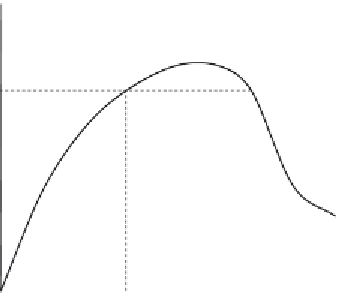Civil Engineering Reference
In-Depth Information
highlighted in this chapter, should be used instead. Negative eigenvalues
may be predicted from an eigenvalue buckling analysis. The negative eigen-
values indicate that the structure would buckle if the loads were applied in
the opposite direction. Negative eigenvalues may correspond to buckling
modes that cannot be understood readily in terms of physical behavior, par-
ticularly if a preload is applied that causes significant geometric nonlinearity.
In this case, a geometrically nonlinear load-displacement analysis should be
performed. Because buckling analysis is usually done for stiff structures, it is
not usually necessary to include the effects of geometry change in establish-
ing equilibrium for the original state. However, if significant geometry
change is involved in the original state and this effect is considered to be
important, it can be included by specifying that geometric nonlinearity
should be considered for the original state step. In such cases, it is probably
more realistic to perform a geometrically nonlinear load-displacement
analysis (Riks analysis) to determine the collapse loads, especially for
imperfection-sensitive structures as mentioned previously. While large
deformation can be included in the preload, the eigenvalue buckling theory
relies on the fact that there is little geometry change due to the
live
(scaled
incremental load) buckling load. If the live load produces significant geom-
etry changes, a nonlinear collapse (Riks) analysis must be used (
Figure 5.30
).
The initial conditions such as residual stresses can be specified for an
eigenvalue buckling analysis. If the buckling step is the first step in the anal-
ysis, these initial conditions form the original state of the structure. Boundary
A
P
Displacement
Figure 5.30 Load-displacement behavior that could be predicted by the Riks method
available in ABAQUS [1.29].






Search WWH ::

Custom Search